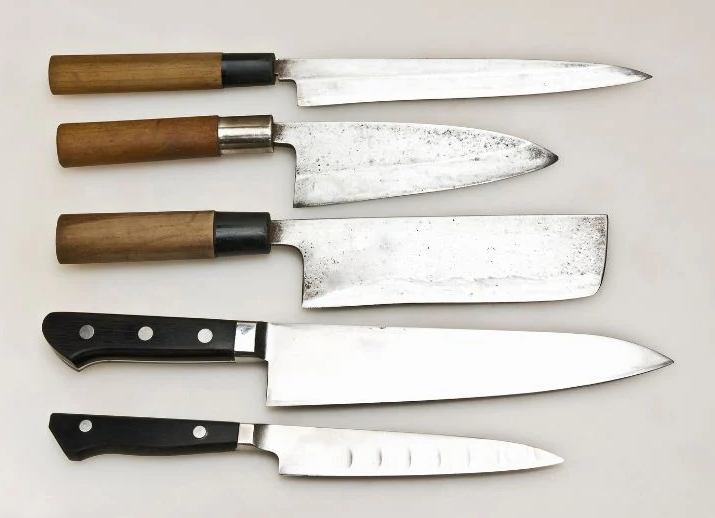Japanese knives are handy and, at the same time, aesthetically pleasing. These are some of Japan’s main regions where handmade knives are produced. Each region has its own unique style and traditions, and the knives made in each region will reflect these differences. Handmade Japanese knives are prized for their exceptional quality, craftsmanship, and attention to detail, and they are highly sought after by professional chefs and home cooks alike.
Handmade Japanese knives and mass-produced knives can differ in several ways, including:
1. Material
Handmade knives are often made from high-quality, high-carbon steel, which is harder and holds a sharper edge than the steel used in mass-produced knives. Japanese knives often use a type of steel called “hagane,” a tough steel used for the blade’s cutting edge, while a softer steel called “jigane” is used for the blade’s spine and tang to provide flexibility.
2. Craftsmanship
Handmade knives are created by skilled blacksmiths and knife makers who have honed their craft over many years. These knives are made with attention to detail, including precise heat treatment, forging, and grinding to ensure a sharp, durable blade. Mass-produced knives are often made by machine, with less attention to detail and no individual craftsmanship.
3. Design
Handmade knives are often one-of-a-kind, with unique designs that reflect the style and skill of the maker. Mass-produced knives, on the other hand, are designed to be efficient and economical, often using standardized designs.
4. Performance
Because of the materials and craftsmanship used, handmade knives tend to perform better than mass-produced knives, with sharper, more durable blades and better balance. They are also often easier to sharpen and maintain since they are made with care and precision.

